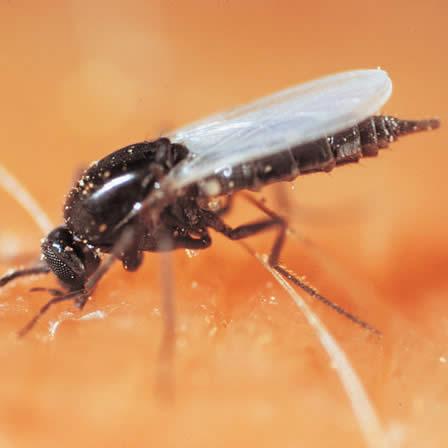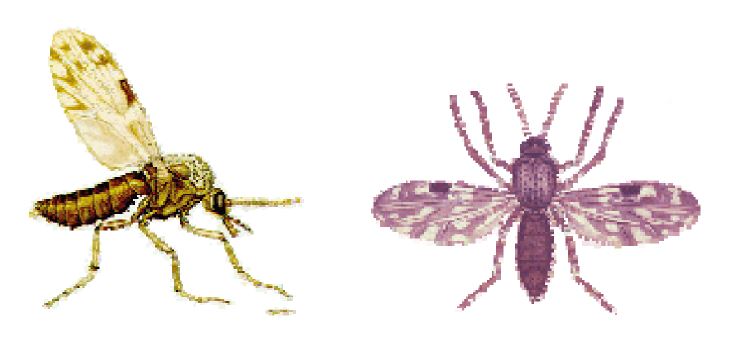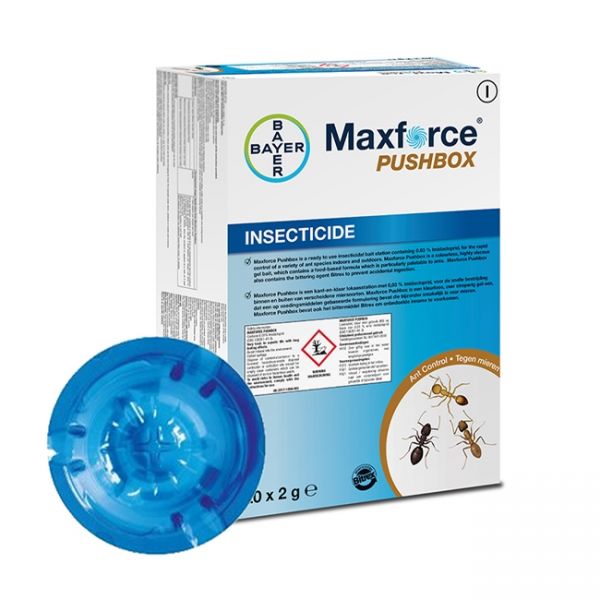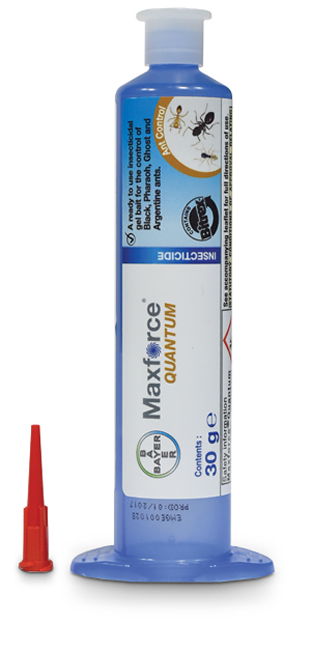Biting Midges (Culicoides sp.)
Biting Midges (Culicoides sp.)
 |
 |
Identification:
1.5 mm long and has distinct dark spots on its wings.
Biology:
Female midges lay eggs in masses over open water or attach to vegetation. Eggs hatch in about 72 hours and the young larvae drop to the bottom of the lake, stream, etc., feeding as scavengers on organic debris (silt, algae and plankton). The larval stage takes about four weeks followed by pupation lasting usually 48 hours. Pupa emerge from their pupal skin, rising to the water surface like a mosquito. Adults do not eat and have a short life span of five to ten days. Males swarm at dusk with mating occurring after females enter the swarm.
Control:
No control measures for midges are entirely satisfactory when large bodies of water are nearby. Locating the source of breeding is best. If possible and practical, locate and eliminate areas of standing water. Midges may fly as far as a quarter of a mile from the breeding site such as a drainage ditch, standing water, lake or pond. They can also develop in and around buildings in well-watered soils and occasionally in standing water from air-conditioning units on building roofs. Check stagnant, polluted water accumulating in bird baths, clogged rain gutters, water-holding tree stumps, flower pots, old tires, etc. Prevention Houses and buildings with outside lighting will attract large numbers of non-biting midges. Move light away from sensitive areas such as doorways, windows, patios, etc. Electronic Fly killers will kill midges, but may often attract more midges into the area than are killed.
Products to control Biting Midges:
|
Imidasect Ant Gel (35g tube) |
Maxforce Pushbox (20 x 2g) |
Maxforce Quantum Gel (30g tube) |



